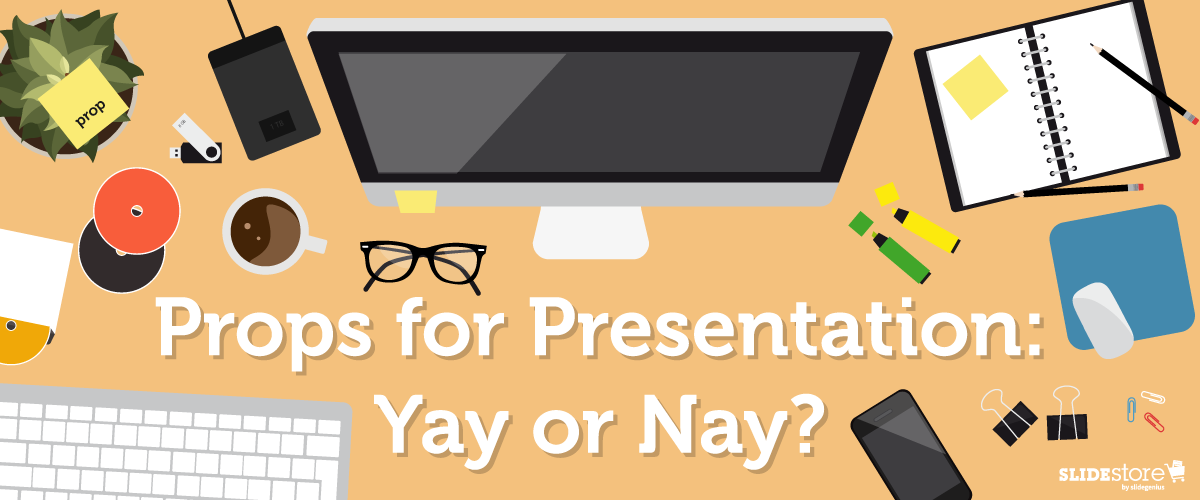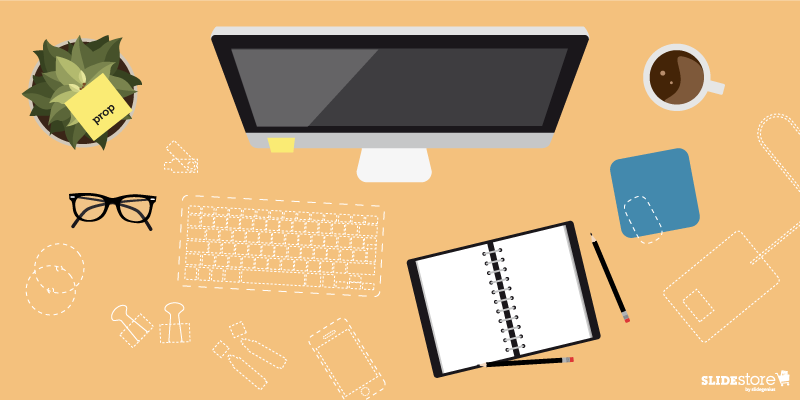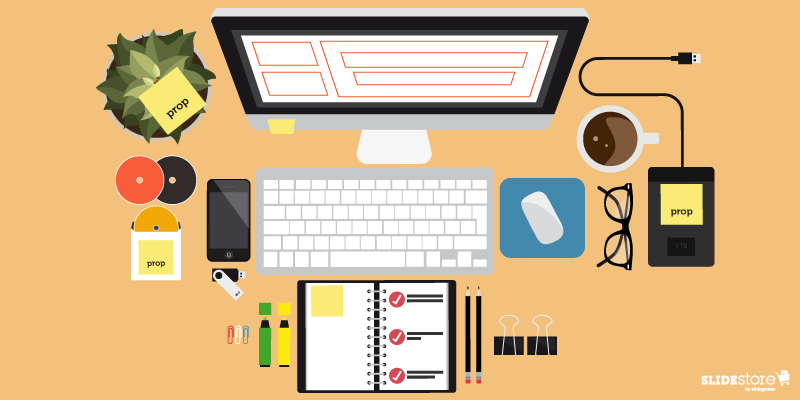
When you think of theater, you imagine a stage, a backdrop, and the multiple stage properties that actors use to bring a story to life. Props help not only the troupe but also the audience in reliving the experience of the characters and injecting a different sense of realism in a manner that only plays and musicals can deliver, and not just imagining how everything unfolds.
In a similar vein, you could liken a presentation to a stage play. You prance around onstage, tell a story, and evoke emotions and solicit responses from your audience. And… you use props? Is it even necessary? Here are the pros and cons of incorporating them into your speeches.

Impact
Pro: Props are powerful tools you could use to concretize points and provide nonabstract examples to an idea. Kind of like giving a face to a name. If anything, that concept of “concreteness” can make a thought clearer, more compelling, and more conducive to learning. Provide a good model or a situation that perfectly illustrates every aspect of the abstract concept.
Con: However, a bad example may end up making the subject even more complicated and confusing. Instead of explaining the finer points, a mismatch of properties and attributes between your example and the idea you’re trying to explain could lead to their total disregard. Avoid false analogies.

Visibility
Pro: The moment your audience sees your prop, one of two events will happen: if you show it immediately, you make them curious of how it relates to your point; if you wait until the perfect time, then there’s a sudden realization of, “So that’s how that works.”
Con: Of course, your audience needs to see it first, from the people in the first row to the back of the room, even the ones just standing up near the exit. So, should it be a medium- to large-sized object? Those are plausible, but if you’re uncomfortable and look awkward using your prop, then that’s just a cringe-fest for viewers. If it’s too small, then the impact that everyone should have felt is now limited to only a few in front of you. You could prevent the latter with video projection on a screen, but otherwise, consider the size of your prop and the stage. Don’t waste your efforts with props only you can see and appreciate.

Functionality
Pro: Look at this one in two ways: whether your prop works or not and whether it’s practical or impractical. For the former, make sure it doesn’t malfunction during the most important part of your speech. Planning even the littlest details down to the letter is a good way to impress your audience with your prop, especially when it’s a complex piece of equipment or a simple tool used to simplify a complex concept. For the latter, show how it could also function in their lives. More than just a demo, this is an application of its practicality.
Con: Again, here are two ways to look at it: accidents or any unwanted incidents because your prop failed and undesired impressions because of how clunky or how awkward it looks when being used.
As a final point, does having a prop work? Are you comfortable enough with using an object and explaining how it relates to your main point? There are proponents of the notion, and they even recommend going the extra mile. The results are worth the effort.
Verdict
A prop is a tool, and as such, it can be used to have a good effect or a bad one. It all depends on how you use it. This one falls squarely on your shoulders.
However, there are general reminders you must ask before you plan on using whatever prop you need:
- Are you sure it will impact your audience with the intended effect?
- Will it be big enough so that everyone in the venue can see it?
- Have I tested it properly and won’t fail me while I talk?
- Is it even a good idea to use props here?
If your answers to the questions above are all yes, then by all means, use one. By then, the only concern you have is if it will drive your point home. Take care of that, and you’ll have an effective presentation in store for your audience… if you can pull it off. Isn’t that a good challenge?
Resources:
Gallo, Carmine. “Using Props to Improve Your Presentations.” Bloomberg. January 28, 2009. www.bloomberg.com/news/articles/2017-06-13/synchronous-global-recovery-masks-a-deepening-asset-imbalance
Grant, Anett. “How to Use Props to Make Your Presentation More Powerful.” Fast Company. July 28, 2015. www.fastcompany.com/3048857/how-to-use-props-to-make-your-presentation-more-powerful
Linehan, Dave. “How to Use Props in Presentations.” DaveLinehan.com. November 17, 2015. www.davelinehan.com/props-in-presentations
Miller, Fred E. “Props for Presentations: Seen and UnSeen!” No Sweat Public Speaking. October 13, 2009. www.nosweatpublicspeaking.com/props-for-presentations-seen-and-unseen
Miller, Fred E. “Using Props in a Presentation.” No Sweat Public Speaking. September 21, 2009. www.nosweatpublicspeaking.com/using-props-in-a-presentation
Weinstein, Yana and Megan Smith. “Learn to Study Using … Concrete Examples.” The Learning Scientists. August 25, 2016. www.learningscientists.org/blog/2016/8/25-1
Zimmer, John. “How Do Props Help a Presentation?” Manner of Speaking. September 25, 2011. www.mannerofspeaking.org/2011/09/25/how-do-props-help-a-presentation
Zimmer, John. “Ten Tips for Using Props in a Presentation.” Manner of Speaking. September 29, 2011. www.mannerofspeaking.org/2011/09/29/ten-tips-for-using-props-in-a-presentation
“How to Use a Prop When You Are Presenting.” Time to Market. n.d. www.timetomarket.co.uk/presentation-tips/confident-presentation-tips/how-to-use-a-prop-when-you-are-presenting